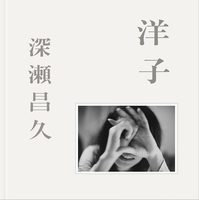$45.00
$33.75
Back Ordering
Usually wait 20 days
- Hardcover
- 112 pages
- 225 × 263 mm
- ISBN 9784865411744
- Aug 2023
"I live and work in Miyazaki Prefecture. Everywhere I look, it is surrounded by the sea. The shore continues with beautiful beaches well-cleaned by the government and volunteers. A little further out, however, is the opposite world. The seashore as it is in today's society, where debris and jetsam have been dumped and forgotten, and no one even enters.
Plastic, gloves, toys, fish, and bird carcasses with empty bright colors have become trash. Things have been tossed about by the waves of time from afar, dried up by the sun, and transformed into new forms. These are the traces of human involvement in the past, evoking a strange sensation that does not seem to belong to this world.
I collect the debris one by one, absorbed, looking only down. I feel the discarded objects speaking to me. Someone made them, had them, and came with the waves to the beach. And then, they met me. This series is the last portrait that records their final state."
Shinichiro Uchikura
"Castaways are beautiful, poisonous, and sad.
As he walks through the coast, he finds and collects small chairs shaped like rusty crabs, glasses that have lost their owners, clocks, and filthy dolls.
I imagine him offering the objects he chose on a white cloth; as if making a collage on the coast, he creates something that exists only temporarily, photographs them, and repeats such action.
If it comes to his hands, lost time and damaged bodies of such forgotten and meaningless castaways are transformed into something innocent and dainty.
Something is charming about that.
The sacred objects in the monochrome seem to go into a quiet sleep as if they have been waiting for a long time.
He who casts a tender eye on his subjects might be someone with a ensitive sensibility, who can imagine what it would be like to be a drifter himself."
Contributed text by Michiko Kon
"The Sea of Oblivion" is a theatrical still life in which the viewer is conscious of the placement of the main subject and the supporting characters. Organic and inorganic objects intertwine, and things discarded by humans and things no longer useful in nature cohabit to create a small universe.
Fragments of the world are condensed on a square screen, and in the imagination, they begin to move with cell-like precision. The objects are either already dead or lifeless from the start, but are given a new life by being photographed. Like actors on a stage, they are assigned a role in the photograph and begin to start a new life as part of the work's universe.
Extracted from the text "A Small Universe Things by the Sea"
by Kenji Takazawa(Photography Critc)







































